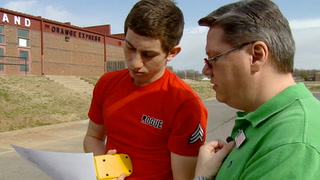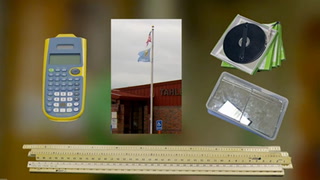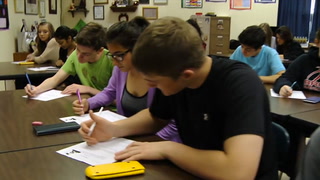Series Engaging All Students in Common Core Math: Using Extroverts
Math.Practice.MP3
Common core State Standards
- Math: Math
- Practice: Mathematical Practice Standards
-
MP3: Construct viable arguments and critique the reasoning of others.
Mathematically proficient students understand and use stated assumptions, definitions, and previously established results in constructing arguments. They make conjectures and build a logical progression of statements to explore the truth of their conjectures. They are able to analyze situations by breaking them into cases, and can recognize and use counterexamples. They justify their conclusions, communicate them to others, and respond to the arguments of others. They reason inductively about data, making plausible arguments that take into account the context from which the data arose. Mathematically proficient students are also able to compare the effectiveness of two plausible arguments, distinguish correct logic or reasoning from that which is flawed, and--if there is a flaw in an argument--explain what it is. Elementary students can construct arguments using concrete referents such as objects, drawings, diagrams, and actions. Such arguments can make sense and be correct, even though they are not generalized or made formal until later grades. Later, students learn to determine domains to which an argument applies. Students at all grades can listen or read the arguments of others, decide whether they make sense, and ask useful questions to clarify or improve the arguments.
Save to My Resources
PLEASE CREATE A NEW ACCOUNT OR LOG IN TO ACCESS THIS CONTENT
Enjoy your first video for free. Subscribe for unlimited access.
Have questions about subscribing?
Click Here to learn more about individual subscriptions.
Click Here to learn more about School and Institution access.
Discussion and Supporting Materials
Thought starters
- How does Mr. Pack use his knowledge of students to inform his teaching?
- How does this strategy engage students in constructing arguments and critiquing the reasoning of others?
- How does Mr. Pack adjust his teaching for both extroverts and introverts?
School Details
Tahlequah High School591 Pendleton Street
Tahlequah OK 74464
Population: 1238
Data Provided By:

Teachers
Chuck Pack
Newest
|
4 MIN
|
5 MIN
|
5 MIN
UNCUT CLASSROOMS
| TCHERS' VOICE
English Language Arts














9 Comments
Iain Weigl Nov 17, 2020 3:39am
I agree that it is incredibly important to keep your students comfortable in a learning space, and to keep that in mind when creating lesson plans and establishing dialog in the classroom. While we should encourage introverts to come out of their shell and interact with the classroom, to hope to get them more involved and be less shy, we should never alienate them or put them in a situation that they will feel uncomfortable in, as no one learns well if they're uncomfrotable. Using a more outgoing or extroverted student to help facilitate certain lessons and show their confidence of coming up in front of the class is an excellent way to not only encourage other students to get involved, but also provide a sort of bridge and common understanding and communication that the teacher is not above the students, and is on an equal level of respect and trust.
Katherine Chapp Mar 6, 2018 10:38am
Cynthia Kovar Jan 17, 2018 2:32pm
Adam Hopson Mar 24, 2016 11:59am
Michael VILLANUEVA Oct 27, 2015 2:46pm